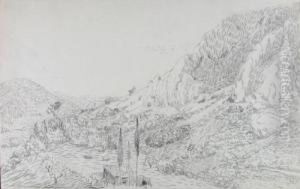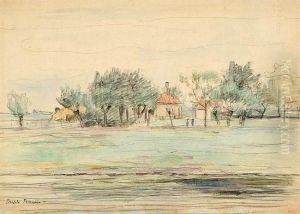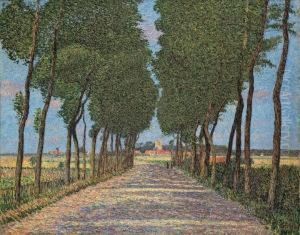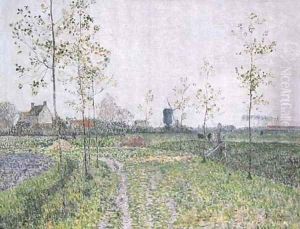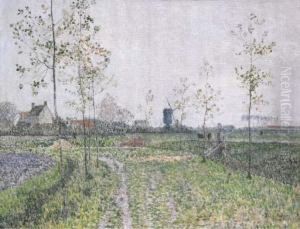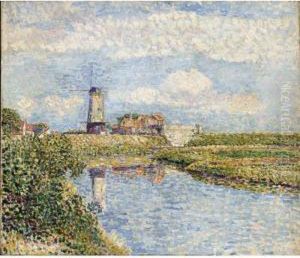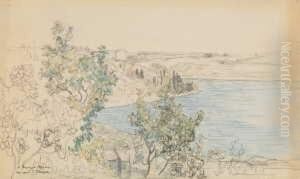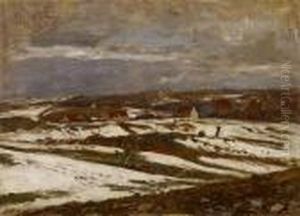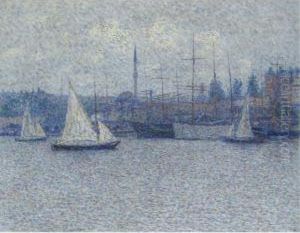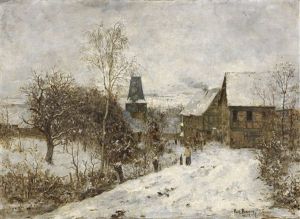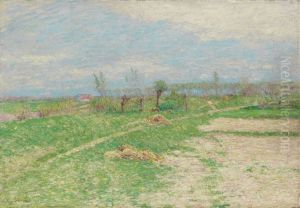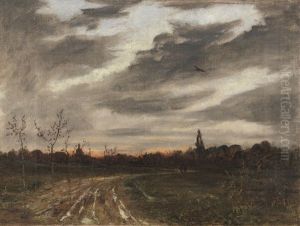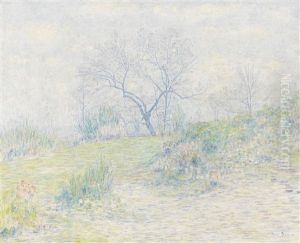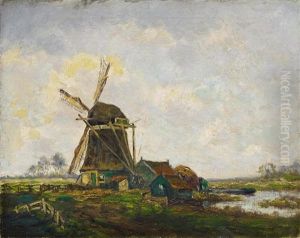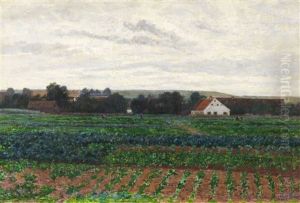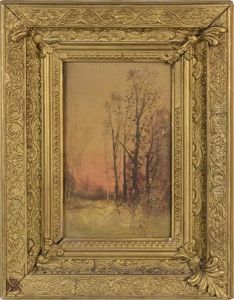Paul Baum Paintings
Paul Baum was a German painter known for his contributions to the Neo-Impressionist and Pointillist movements. Born on May 15, 1859, in Meissen, Germany, Baum initially studied at the Dresden Academy of Fine Arts. He was influenced by the Barbizon School, a French landscape painting group that was active from about 1830 through 1870 and had a significant impact on the development of realism in art.
Baum began his career with a focus on traditional landscape painting. However, his style evolved significantly after he spent time in Belgium and the Netherlands, where he was exposed to the works of the Neo-Impressionists, particularly Georges Seurat and Paul Signac. This exposure led him to adopt a Pointillist technique, characterized by the use of small, distinct dots of color applied in patterns to form an image.
Throughout his career, Baum traveled extensively and spent significant periods in different regions, including the artist colony in the small village of Knokke in Belgium. His landscapes, which often featured rural scenes and natural elements such as trees and rivers, were celebrated for their vibrant colors and dynamic compositions. Baum's work bridged the transition from traditional landscape painting to the more avant-garde approaches of the late 19th and early 20th centuries.
In his later years, Baum continued to paint and also took on teaching roles, sharing his knowledge and techniques with the next generation of artists. He died on October 18, 1932, in San Gimignano, Italy, where he had lived and worked for many years. Today, Paul Baum is remembered as an important figure in the development of modern landscape painting and for his role in bringing Neo-Impressionist and Pointillist techniques into the mainstream of European art.



